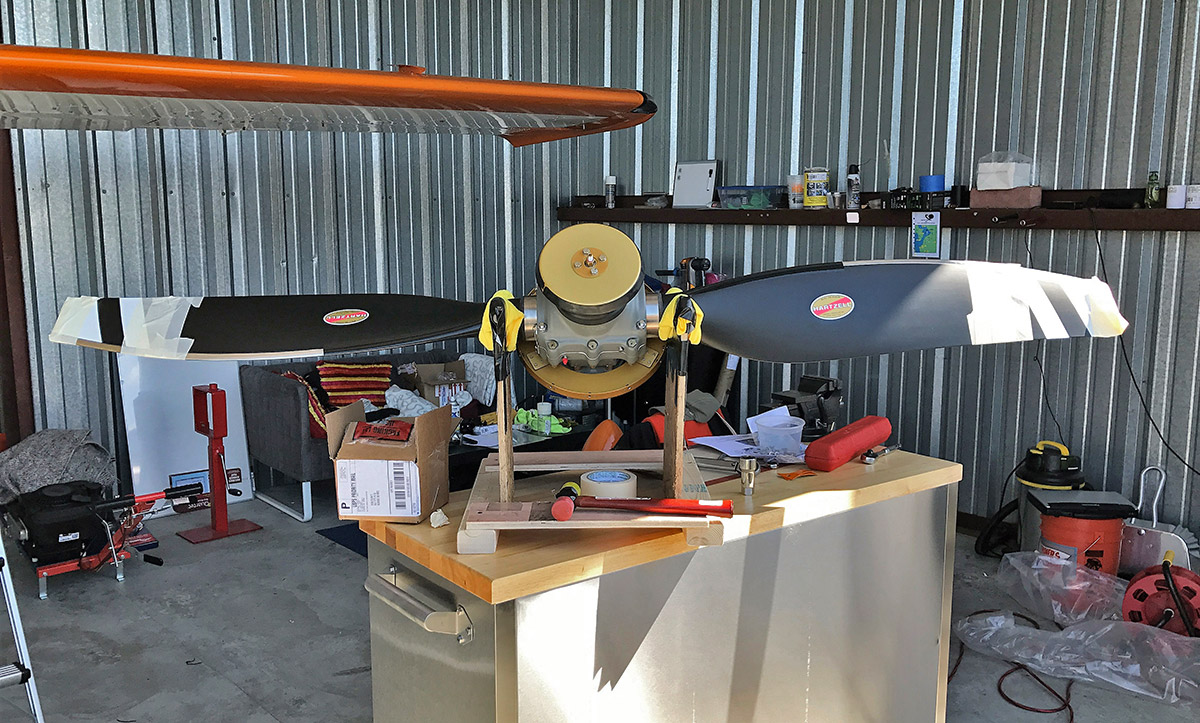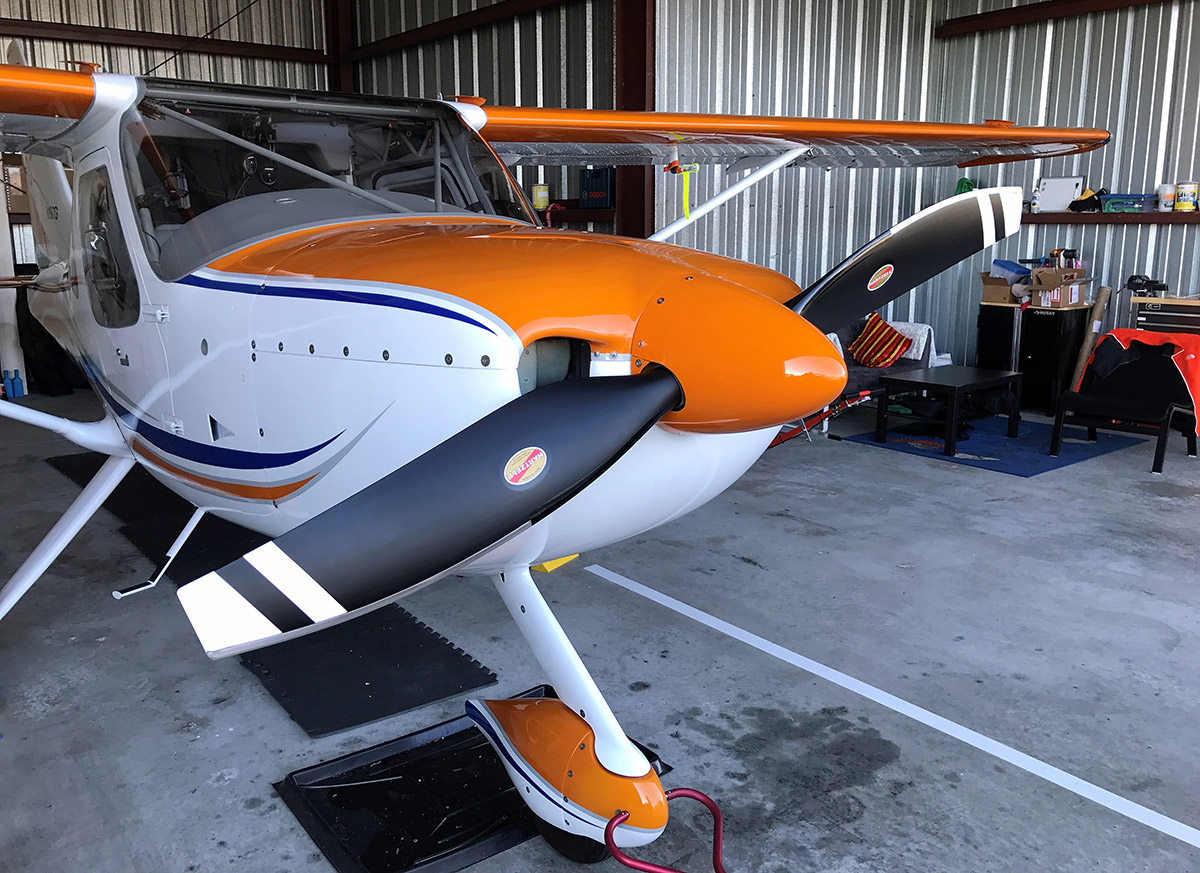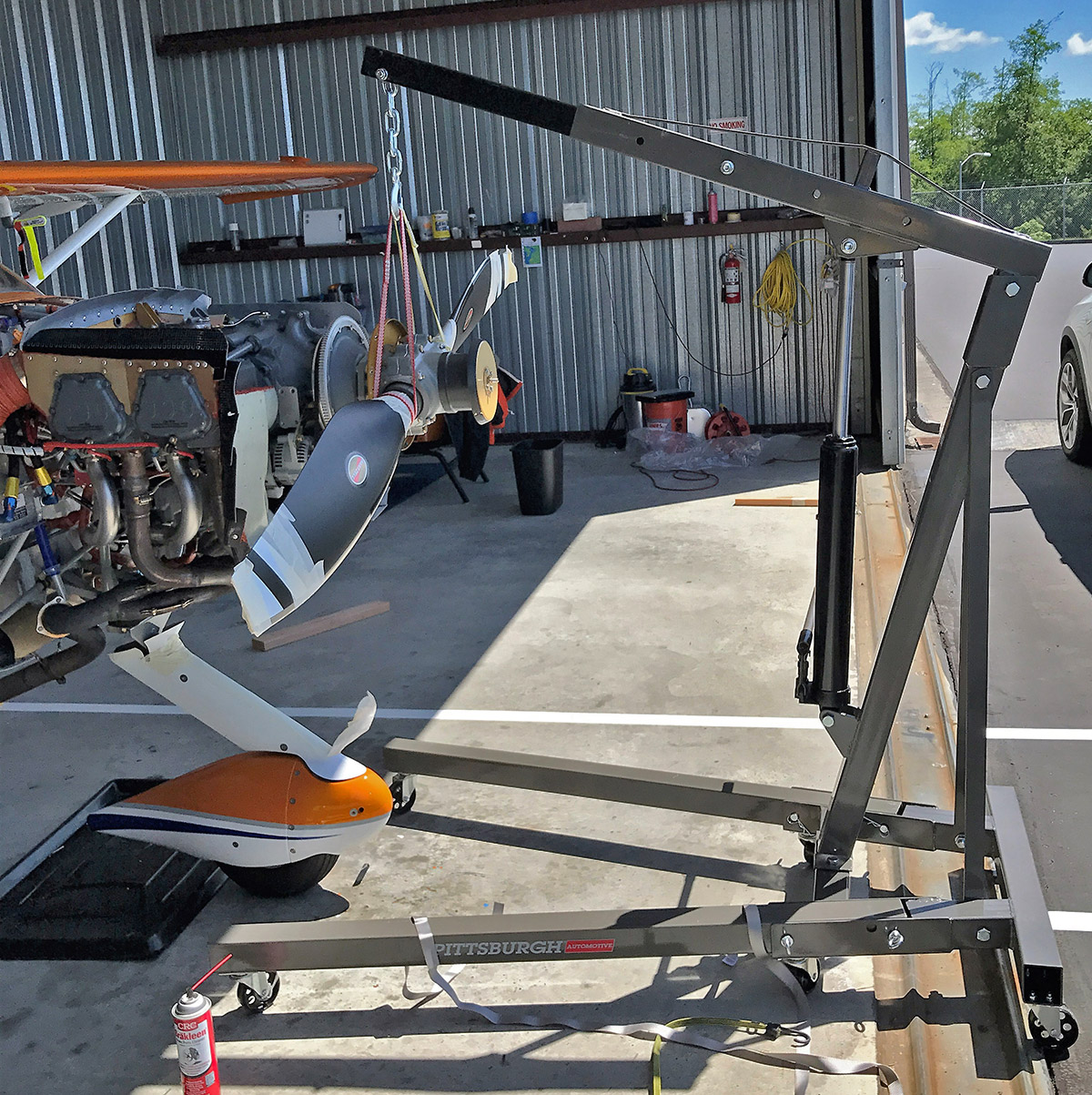I changed the propeller on my Sportsman from a 74” Hartzell Blended Airfoil (HC-C2YR-1BFP/F7497) to 76” Trailblazer composite (HC-C2YR-1NX/NG8301-7X1).
These are my learnings and first impressions.
The short summary is that the new propeller delivers exactly what I was looking for:
- Even shorter takeoff roll—Not that the Sportsman with a Lycoming IO-390 and the Blended Airfoil is sluggish in any way, but I was really surprised how much faster I was off the ground. The increased thrust during takeoff is very noticeable.
- Climb performance—I have not done max. gross-weight climb tests, yet, but single pilot and full tanks climb performance is increased noticeably. Still looking at and gathering more test data, but would I estimate at least a 20% increase.
- Cruise—This is the most interesting part. First, let’s start with the (expected) downside: My WOT max. speed has decreased about 3 to 5 knots. I was seeing 155 knots TAS with the Blended Airfoil and cannot get there now. This is expected given the larger propeller diameter and different shape of the airfoil. Not fully giving up on getting to 155, yet, as it is currently also relatively hot in Washington state. BUT (sentences should not start with “but”, but “but” is really important here) the cruise performance at my preferred TAS of 135 knots is much improved. I can now get to 135 knots TAS with way less engine power (lower RPMs and MAP) which saves close to 1 gallon per hour LOP. Hartzell’s engineering team predicted this as they also show 8 pounds of higher thrust vs. the Blended airfoil at that speed.
- Descending, approach and landing—This is the part where I was hoping the new propeller would deliver the most as the Blended Airfoil offers very limited aerodynamic breaking. It does not disappoint. Pulling the MAP back feels like stepping on breaks (in a good way). I am still testing the limits, but the plane now decelerated from cruise to flap extension speed much quicker, allows for super close and steep short approaches and reduced my landing distance noticeably. I was actually surprised to see how long it took the prop to drop below the RPMs set by the governor when I pulled the MAP back and decelerated. A slight downside is a reduced engine out glide performance I saw in initial tests.
- Reduction in weight_The new propeller is 18 pounds lighter compared to the old one. My plane is one the heavy side, so dropping the weight was nice, but the plane also feels more responsive now when it comes to pitch changes.
- Vibrations—definitely reduced across a broad RPM range and I have not even performed a dynamic balancing. My old prop was also balanced, but still not as smooth. What is less smooth now is idling with a hot engine. The stronger flywheel effect of the old propeller was smoothing out RPM variations caused by the fuel boiling in the injector lines. It’s not bad, but noticeable.
 I did a lot of research before making the investment. Hartzell helped me find the answers to my many questions and even Joe Brown weighted in personally as he also flies a Sportsman with a Trailblazer prop. The decision had to be made on facts and not “tinkeristis” (or a least involve only a little of it) since my wife is also a pilot and convincing her to spend a rather large amount of money on a perfectly fine flying airplane needed solid facts. I am glad that she kept me honest. I placed the order for the new propeller via Glasair Aviation and had it drop shipped to our home.
I did a lot of research before making the investment. Hartzell helped me find the answers to my many questions and even Joe Brown weighted in personally as he also flies a Sportsman with a Trailblazer prop. The decision had to be made on facts and not “tinkeristis” (or a least involve only a little of it) since my wife is also a pilot and convincing her to spend a rather large amount of money on a perfectly fine flying airplane needed solid facts. I am glad that she kept me honest. I placed the order for the new propeller via Glasair Aviation and had it drop shipped to our home.
Removing the old propeller and installing the new one was simple, other than fixing the leaking nose seal that I discovered after removing the propeller. Not a total surprise as I noticed oil on the starter as well as alternator mounts before. Well, a few hours of extra work took care of that. It was actually not hard and cleaning took really the longest time. Getting the seal in took about 30 minutes with the right tool. It’s bone dry now.
A few points to consider:
- The spinner and spinner bulkhead use for the Blended Airfoil will fit the Trailblazer as well. No modifications needed. Spinner to propeller clearances are actually a bit larger with the Trailblazer.
- Use an engine hoist and two slings when removing and mounting the propeller. This really makes the job so much easier. First my wife and I started removing the propeller using the “two people” technique, but got tired arms quickly. The engine hoist made this job super easy and worked well for removal and installation. I was able to install the propeller alone using the hoist.
- The governor RPMs needed a slight increase (one turn) to reach full RPMs.
- Dealing with the FAA was simple, but going back to PHASE 1 is not fun… I mostly miss having my wife next to me as flying with two pilots is just a lot more fun. My testing area is also not the most interesting one, but 5 hours shall pass fast and I need to gather a lot of data. What was unexpected is that the FAA required 10 full circuits as part of the tests. A circuit is defined as takeoff, land, taxi. So not touch or stop and goes.
- There are no operating limitations with this aircraft, engine and propeller combination. Hartzell created Installation Data Sheet No IDS-3533 for this.






Thanks for the article! I’m interested in doing the same with my Sportsman…currently running the 390 engine with the same 74” blended airfoil prop you used to have…now that its been a while, what are your thoughts about the trailblazer? Is it fragile? You mentioned being happily surprised by its cruise performance getting 135 KTAS on 1GPH less than before, what is your fuel flow now? My Sportsman is a tail dragger…I typically get about 130 KTAS on 8.5 GPH, 135 @ 9.0, and 140 @ 10.5…